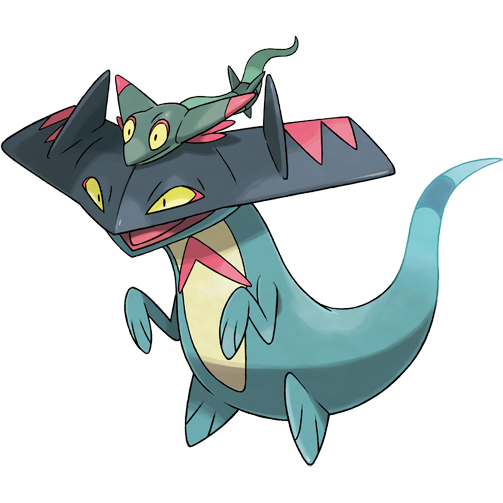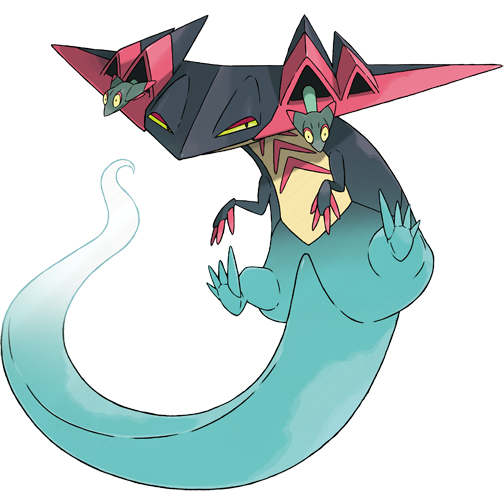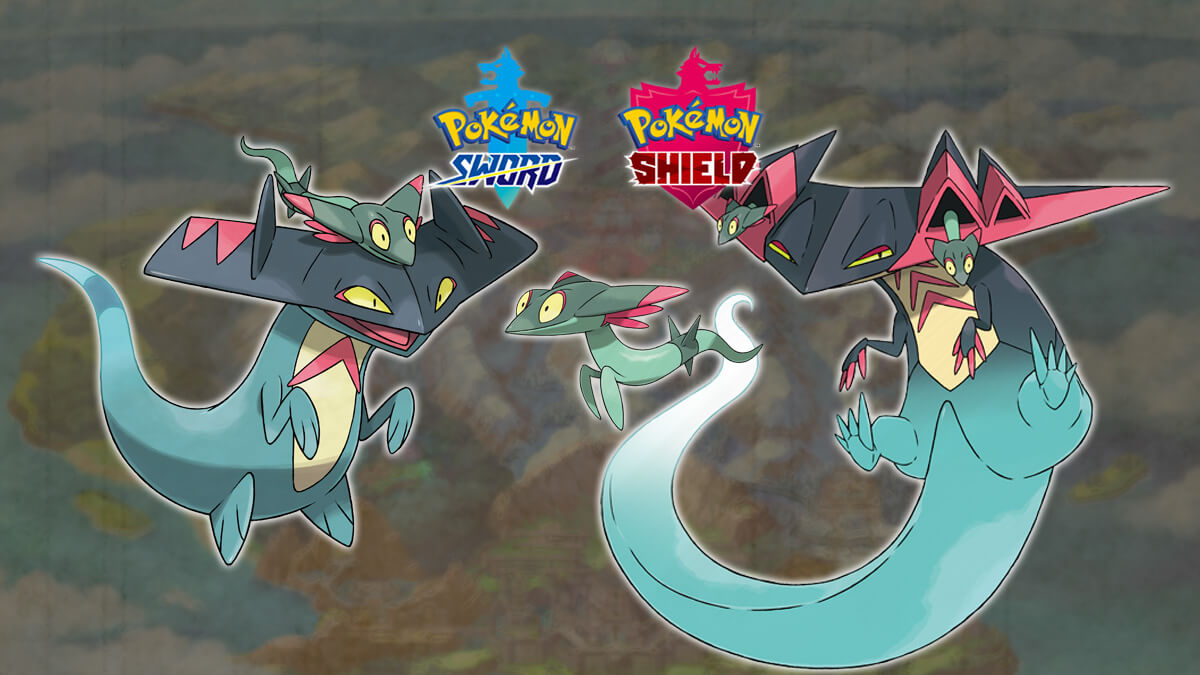In this recurring series, I’ll analyze the origins of Pokémon designs, their culture, and their historical allusions to British culture.
Dreepy

Dreepy is a small and slim Pokémon. It’s a dual Dragon and Ghost-type, and its name represents this as a combination of “dragon” and “creepy”. It has a pointed head and a long tail that with fletching to make it more aerodynamic.
It seems to be partially based on a dart, and its dart inspiration is more evident in conjunction with its evolutions. Darts is a popular sport in England, originating there as a game to play in pubs at the tail end of the nineteenth century. The goal was to throw several darts at a wooden board, with points being allocated based on the position the darts land.
It also seems to be based on the prehistoric diplocaulus, an amphibian which went extinct two hundred million years ago. This may contribute to its Ghost-typing, suggesting the Pokémon rose from the dead. The creature’s aerodynamic skull may help it fly straight at opponents
After being reborn as a ghost Pokémon, Dreepy wanders the areas it used to inhabit back when it was alive in prehistoric seas.
If this weak Pokémon is by itself, a mere child could defeat it. But if Dreepy has friends to help it train, it can evolve and become much stronger.
Drakloak

Drakloak keeps the same winged head shape while growing in size and gaining a torso. In its official artwork it feature a Dreepy at the top of its head. This is part of its familial relationship with its pre-evolutions.
It’s capable of flying faster than 120 mph. It battles alongside Dreepy and dotes on them until they successfully evolve.
Without a Dreepy to place on its head and care for, it gets so uneasy it’ll try to substitute any Pokémon it finds for the missing Dreepy.
Drakloak’s design seems to have some relationship to crocodiles. Similar to Drakloak, baby crocodiles will sit on the head of their mother as they travel.
Dragapult

Dragapult in its final evolution has developed alcoves for Dreepy to sit as its appendages form independent fingers and toes. Its tail grows longer still before fading away into a ghostly ether.
Dragapult’s design comes in part from the concept of a stealth bomber, a type of military aircraft that was created by the allied powers following World War II. Stealth bombers are called that because of their ability to avoid radar. In a way, they could be seen as ghosts.
Dragapult’s name is probably a combination of “Dragon” and “catapult”, referring to a weapon that will launch projectiles at enemies. In this way it also refers to its signature move Dragon Darts, a move in which it will shoot out the two Dreepy and hit the opponent in a multi-strike attack. In a double battle, if one Pokémon wouldn’t be affected by the attack, the Dreepy will redirect towards the other target.
When it isn’t battling, it keeps Dreepy in the holes on its horns. Once a fight starts, it launches the Dreepy like supersonic missiles.
Apparently the Dreepy inside Dragapult’s horns eagerly look forward to being launched out at Mach speeds.
As the Pokédex notes, Dreepy behave just like modern heat-seeking missiles, which will track a target at supersonic speeds and turn in order to force a collision.
Conclusion
Every generation has introduced at least one “pseudo-legendary”, a strong Pokémon that is not obtainable until the end of the game and is usually Dragon-type. Dreepy and its evolutions introduce a strong Dragon to the game with a number of design influences based on English culture.
Leave your own thoughts about Dreepy and its evolutions in the comments below or share them in our Discord server! Don’t forget to enter our September giveaway.

